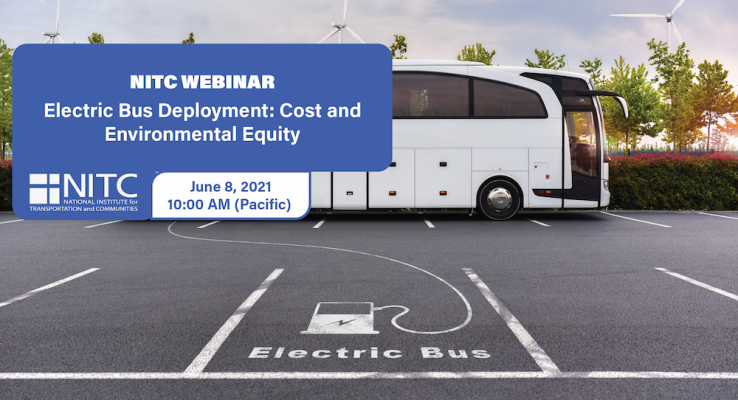
PRESENTATION ARCHIVE
OVERVIEW
This presentation introduces an innovative spatiotemporal analytical framework and web-based visualization platform developed by researchers at the University of Utah to assist transit agencies in identifying optimal deployment strategies for a battery-electric bus (BEB) system by using a combination of mathematical programming methods, GIS-based analysis, and multi-objective optimization techniques. The framework allows transit agencies to optimally phase in BEB infrastructure and deploy the BEB system in a way that can minimize the capital and operational cost of the BEB system while maximizing its environmental benefits (i.e., emission reduction).
KEY LEARNING OUTCOMES
- Introduction to a bi-objective spatiotemporal optimization model for the strategic deployment of BEBs to minimize the cost of purchasing BEBs, on-route and in-depot charging stations, and to maximize environmental equity for disadvantaged populations.
- The optimization considers the unique constraints imposed by BEB operations in a spatiotemporal fashion.
- We used empirical data to offer a potential framework that can be adopted or expanded by transit agencies to optimally deploy BEBs by accommodating multiple goals and objectives that the transit agencies set forth.
- The research could help transit agencies develop optimal deployment strategies for battery-electric bus systems, allowing planners and decision makers to create transportation systems that better serve livable and sustainable communities.
THE RESEARCH
This webinar is based on a study funded by the National Institute for Transportation and Communities (NITC) and conducted at the University of Utah, Portland State University, and the University of California, Riverside. Read more about the research: Deploying Electric Buses to Improve Air Quality in Low-Income Areas.
SPEAKER
Cathy Liu, Associate Professor in Civil & Environmental Engineering at the University of Utah
Dr. Cathy Liu is an Associate Professor in Civil & Environmental Engineering at the University of Utah. Her background is in data-driven application in transportation, and multimodal transportation network modeling. Dr. Liu has conducted sponsored research funded by FTA, NSF, FWHA, and USDOT to assess the efficiency of transportation network and the impact of emerging technologies, such as shared mobility, vehicle electrification and automation. Dr. Liu serves as a member on the Transportation Research Board (TRB) Highway Capacity Quality of Service (HCQS) Committee and Chair of the Technology Transfer subcommittee, served as member of Transit Capacity and Quality of Service Committee (TCQS) (2016-2019) and Managed Lane Committee (2013-2019).PROFESSIONAL DEVELOPMENT
This 60-minute webinar is eligible for 1 hour of professional development credit for AICP (see our provider summary). We provide an electronic attendance certificate for other types of certification maintenance.
LEARN MORE
Photo by Oleksandr Filon/iStock
Sign up for our newsletter to get updates on our events.
This webinar is hosted by the Transportation Research and Education Center (TREC) at Portland State University. The research was funded by the National Institute for Transportation and Communities (NITC), a program of TREC and one of five U.S. Department of Transportation national university transportation centers. The NITC program is a Portland State-led partnership with the University of Oregon, Oregon Institute of Technology, University of Utah and new partners University of Arizona and University of Texas at Arlington. We pursue our theme — improving mobility of people and goods to build strong communities — through research, education and technology transfer.

